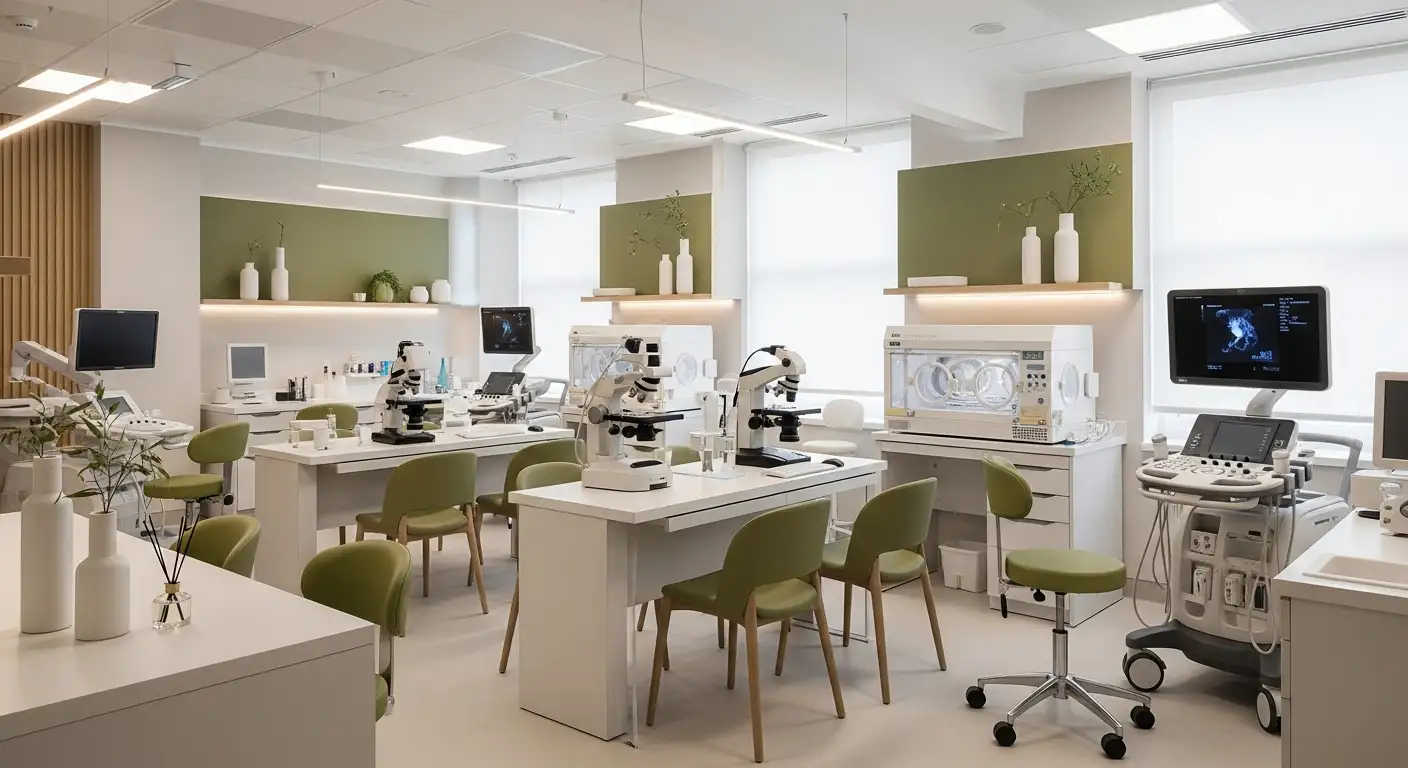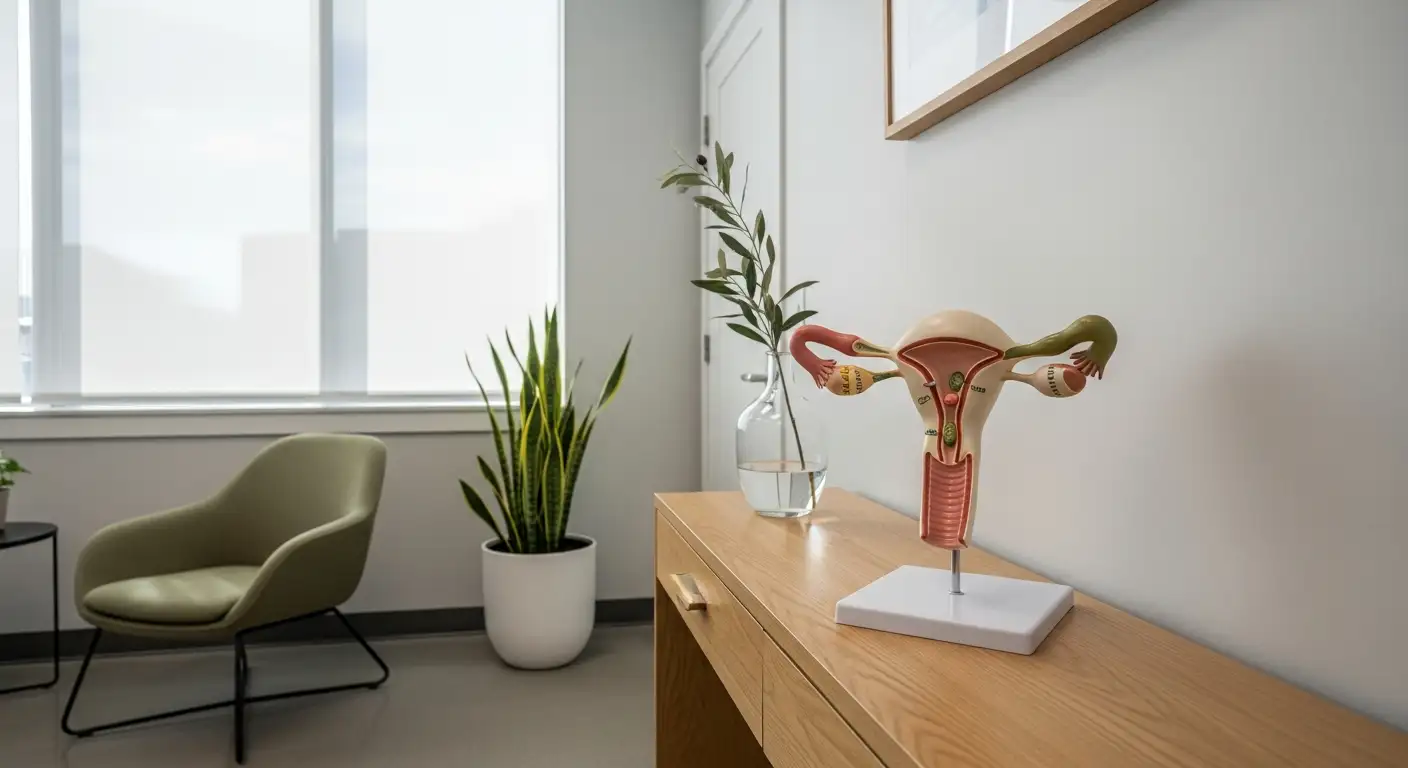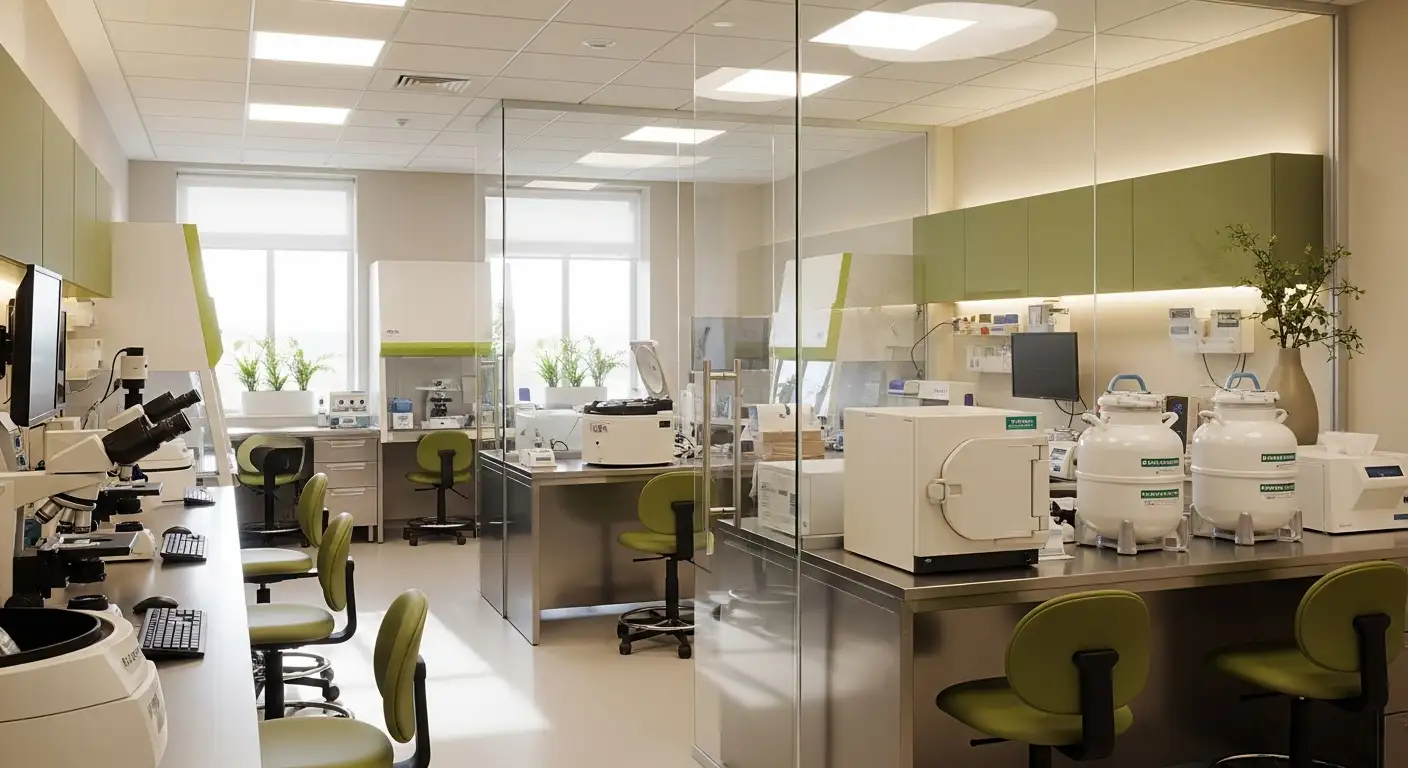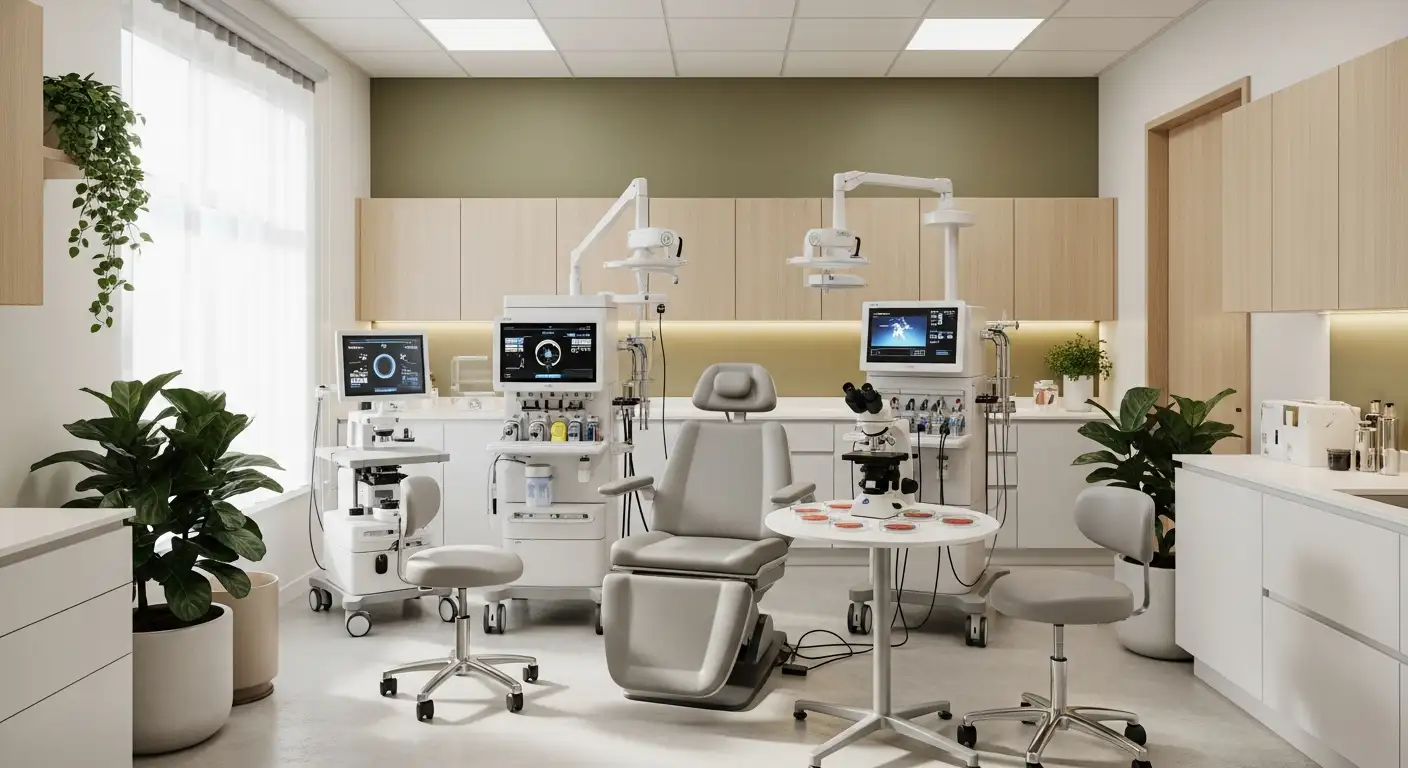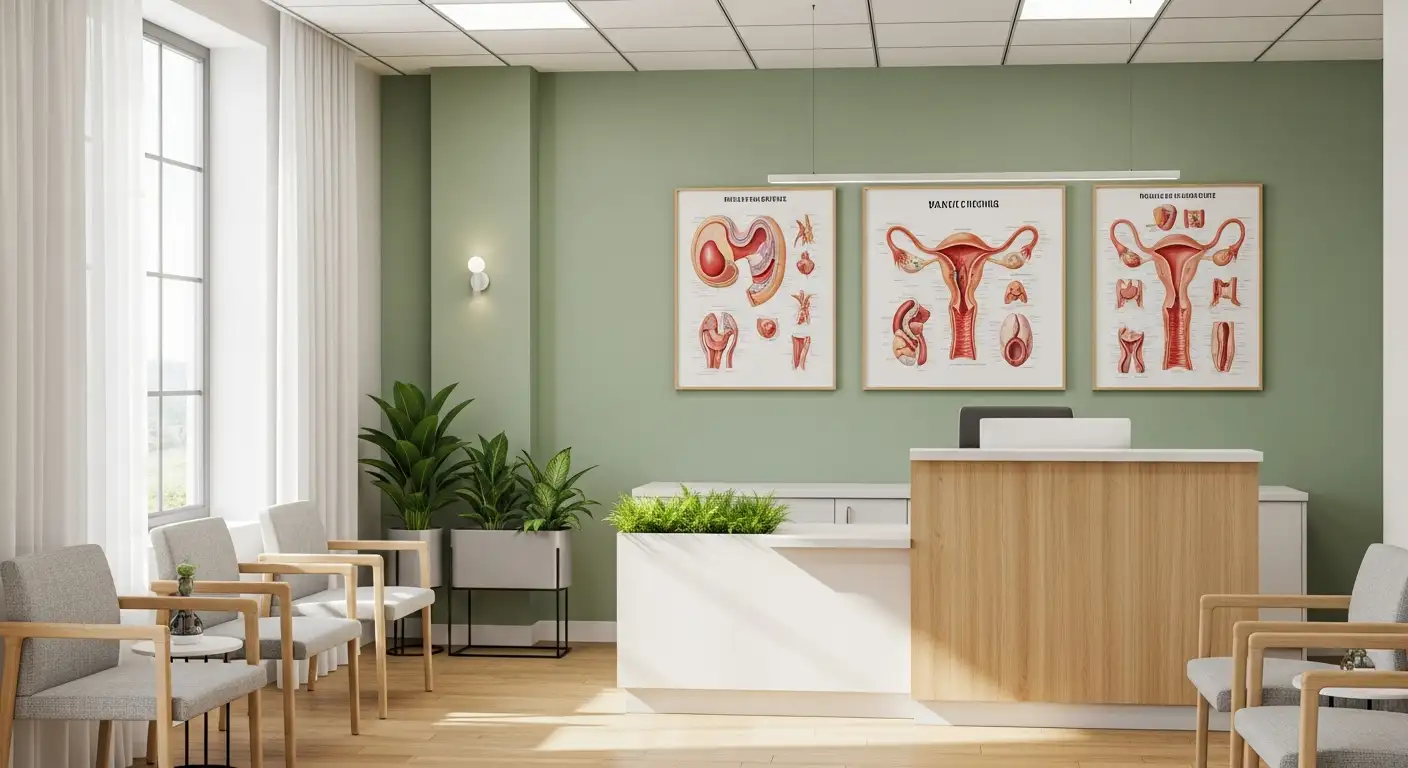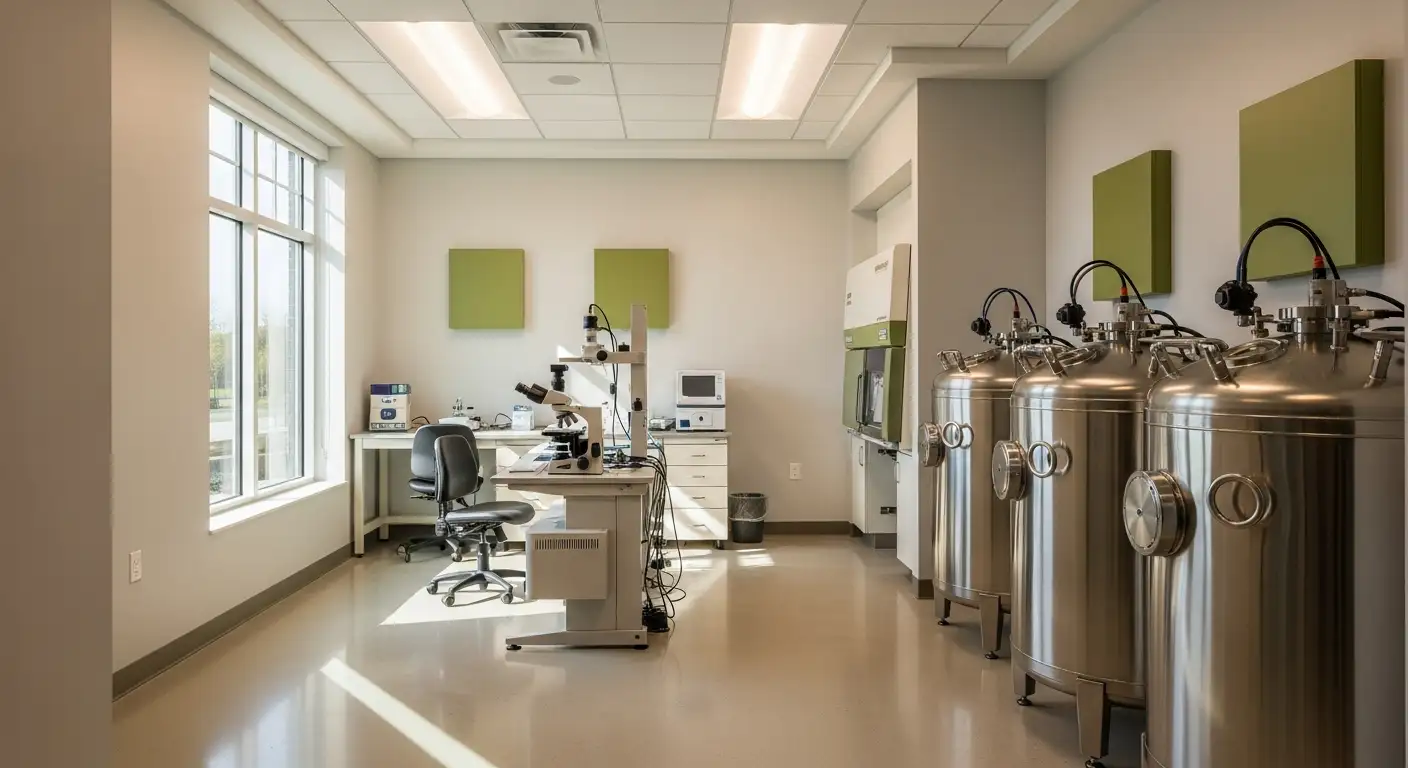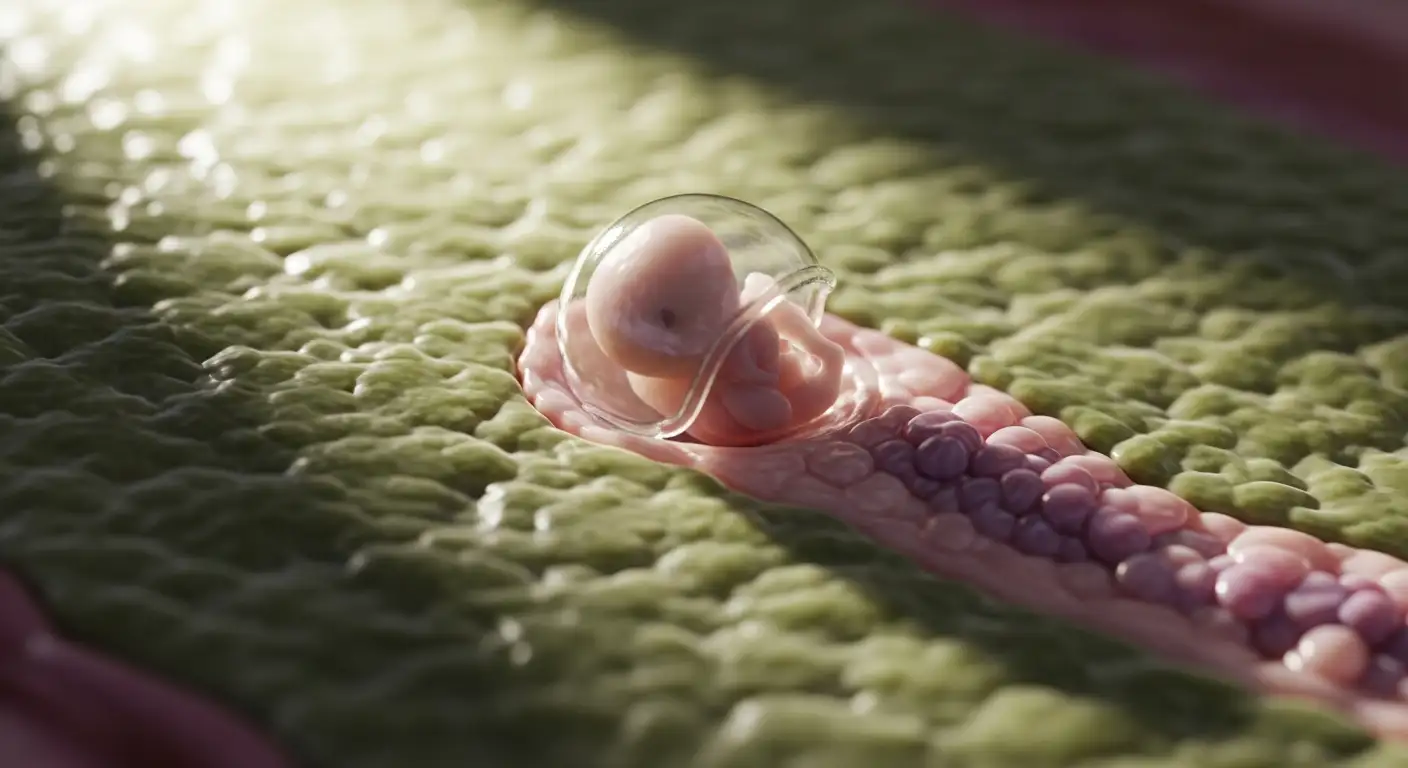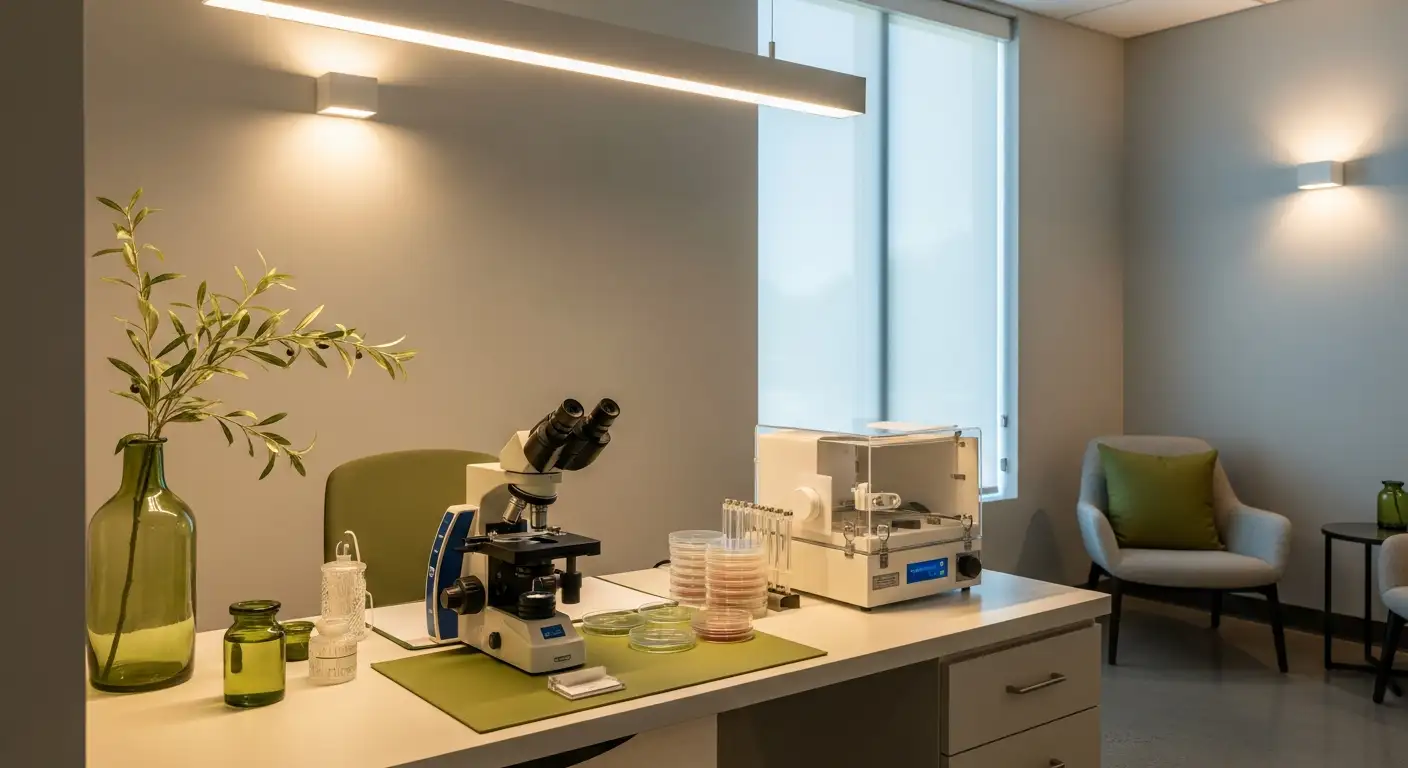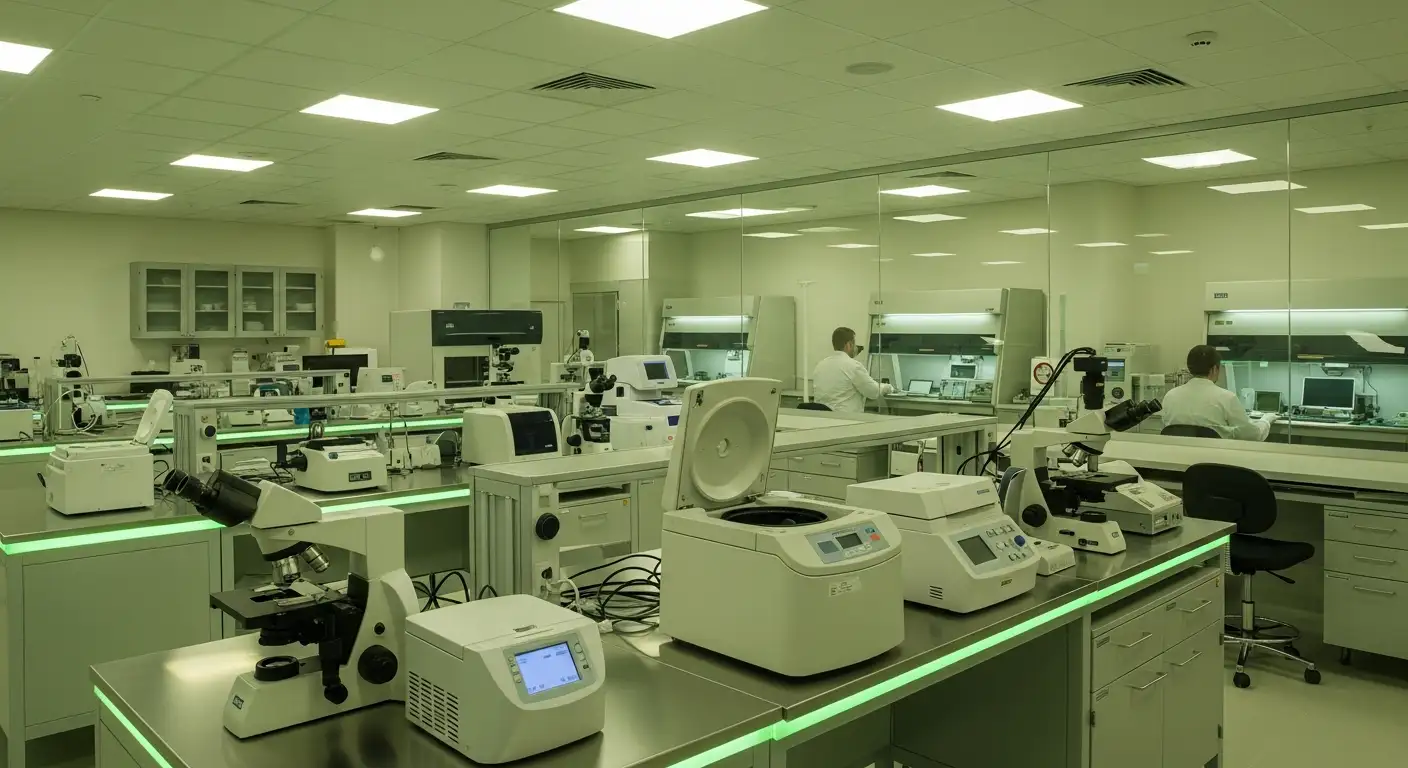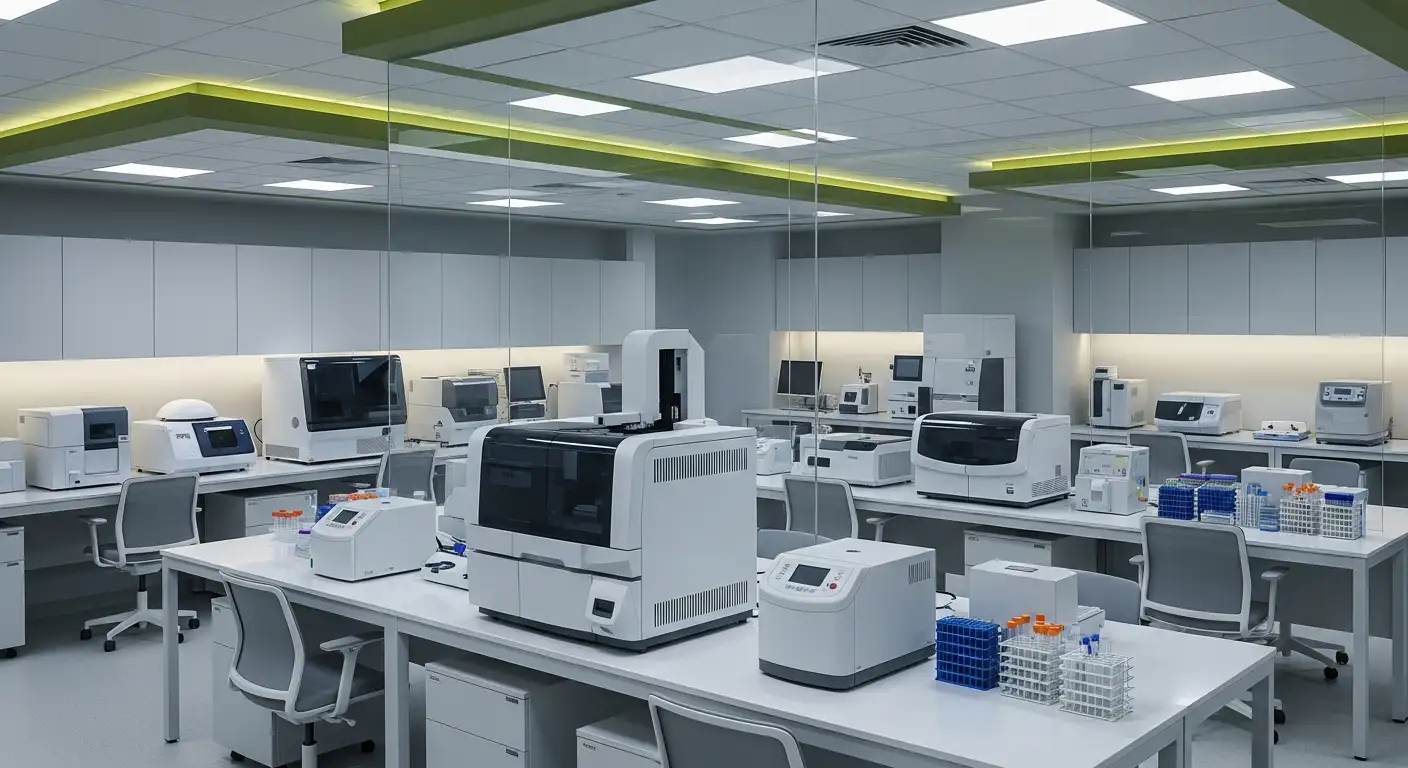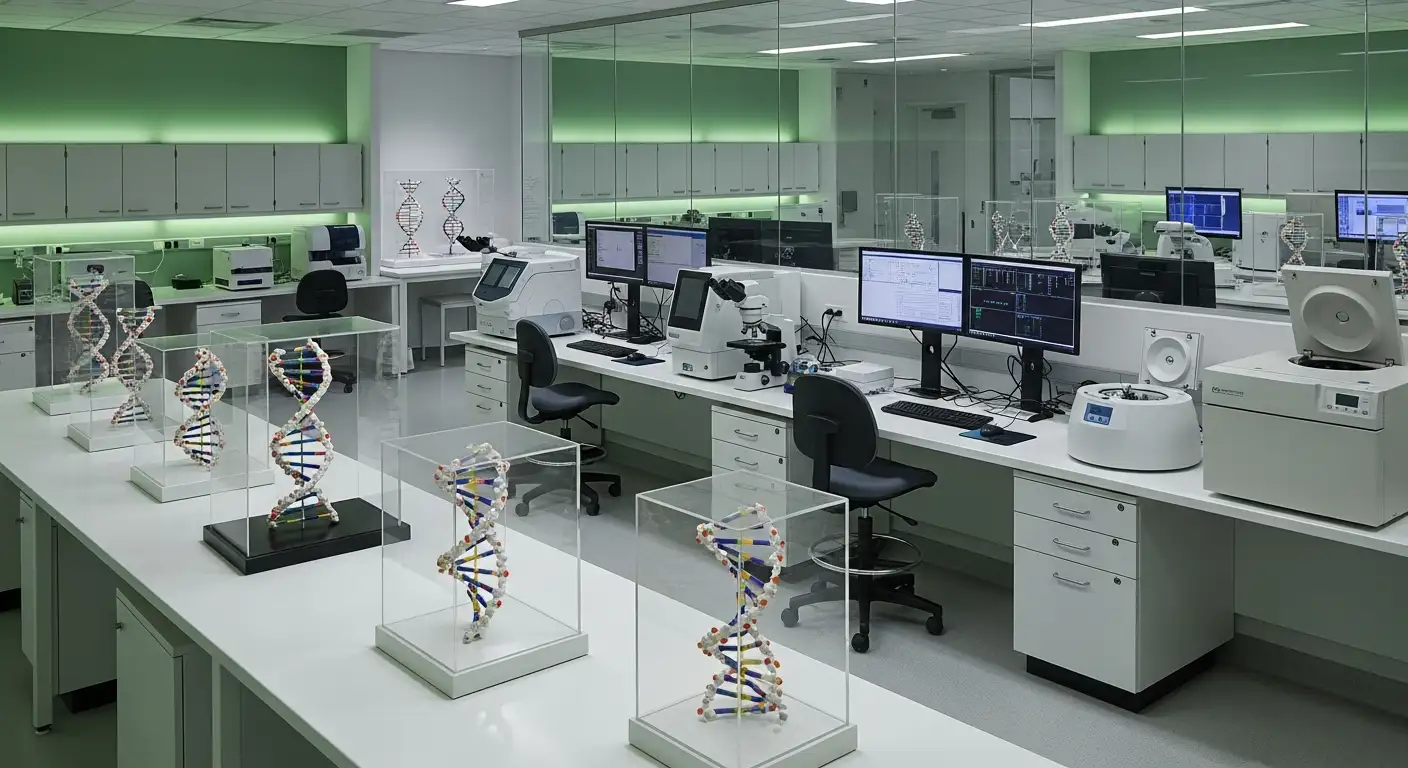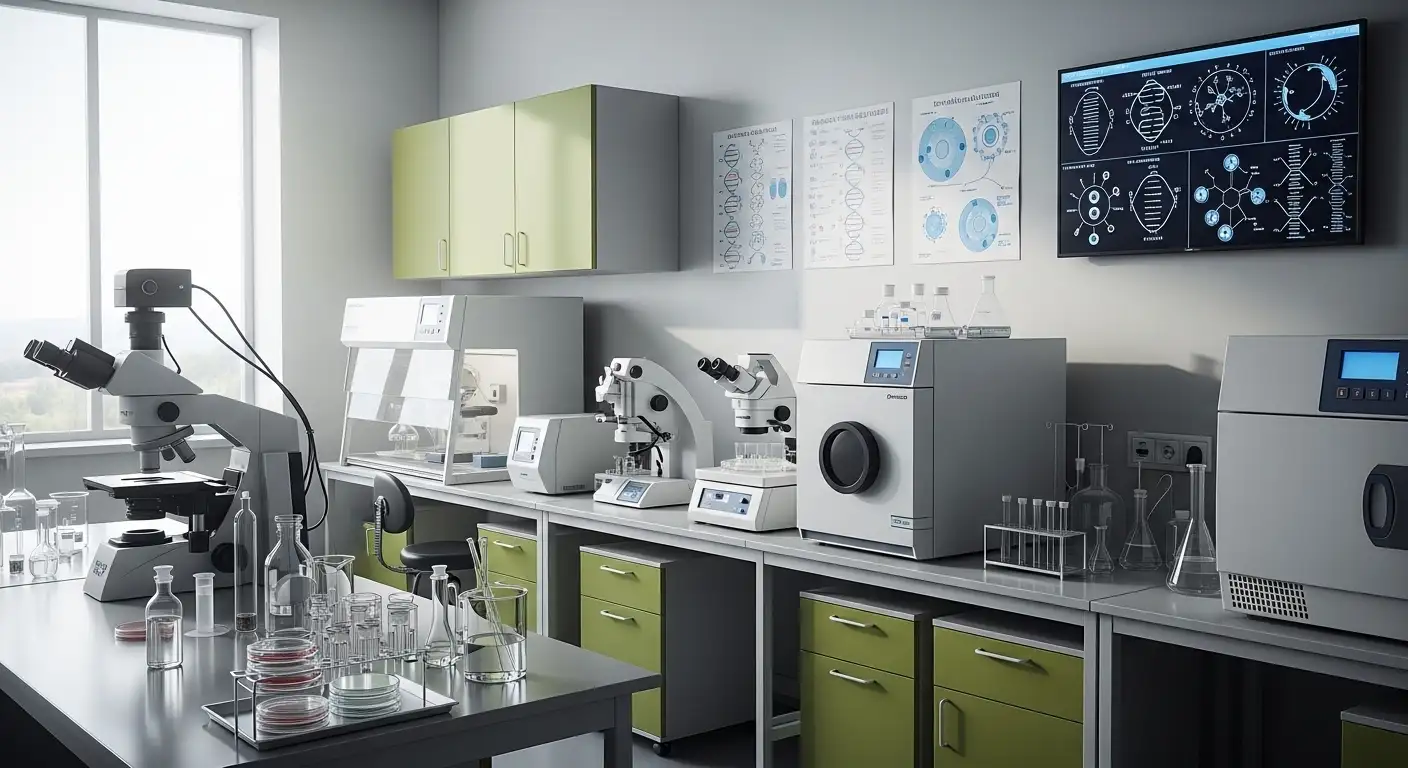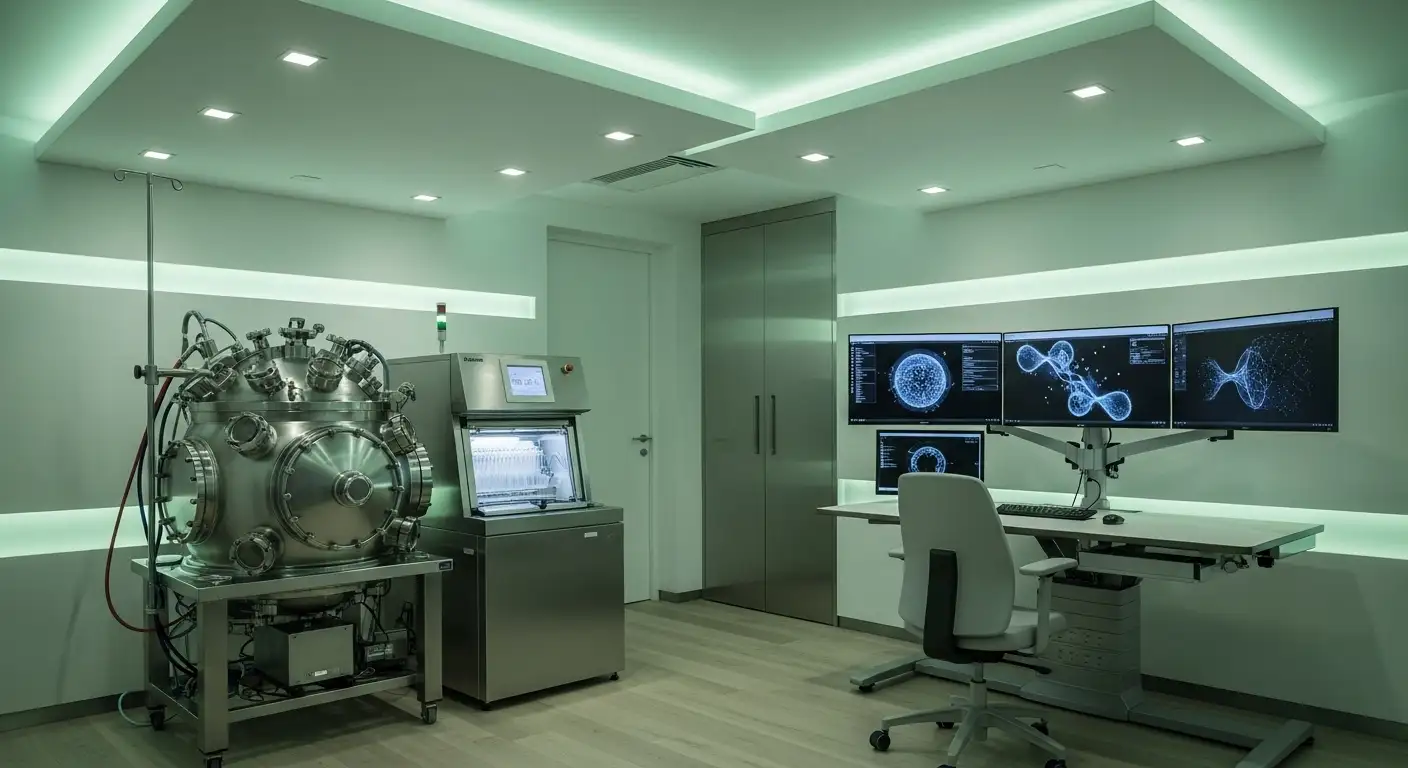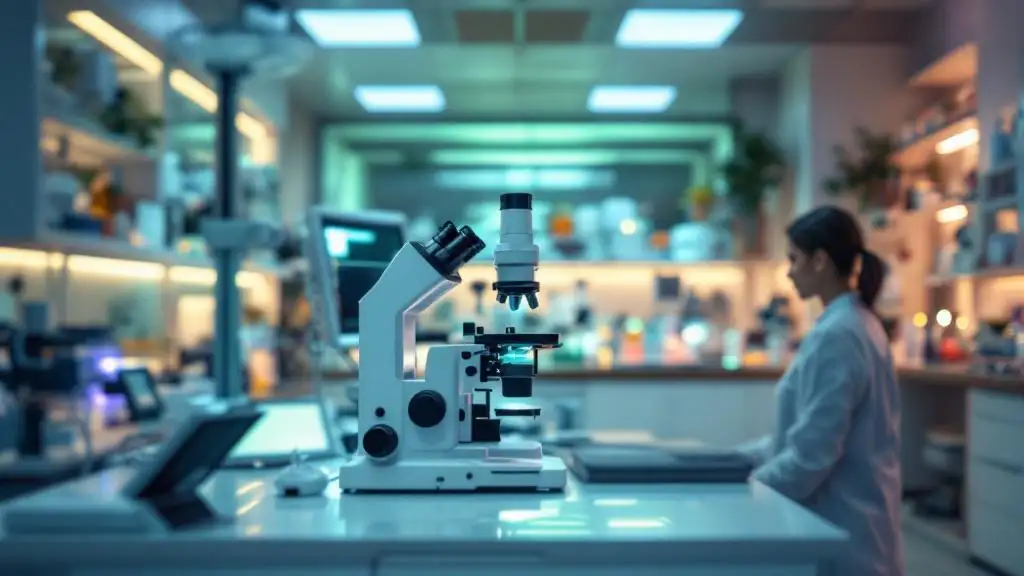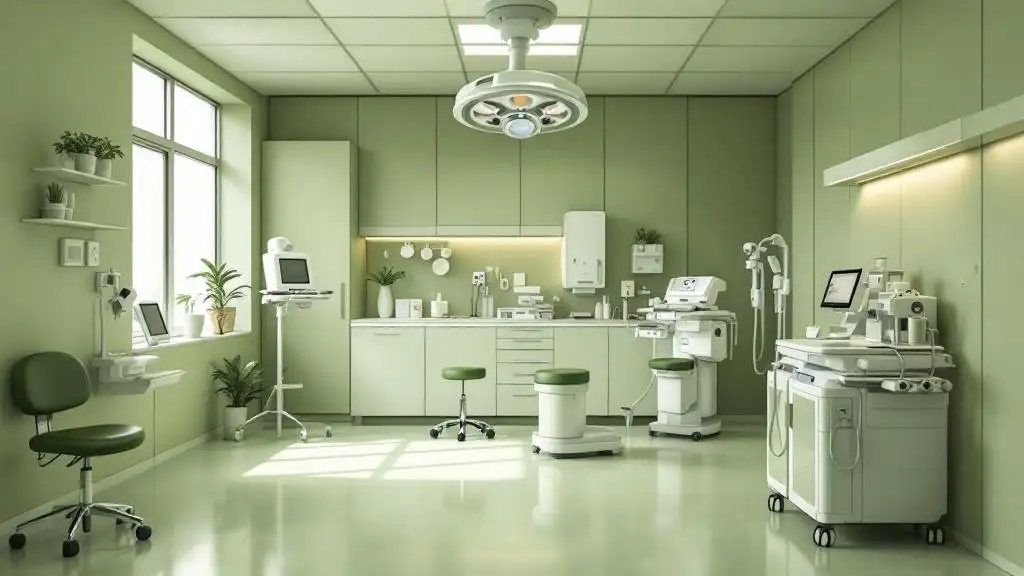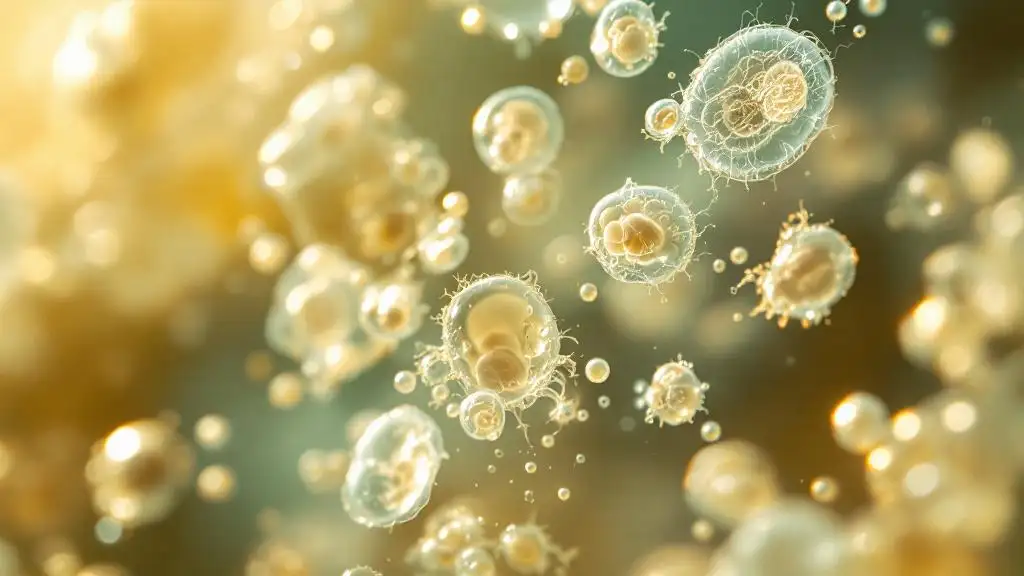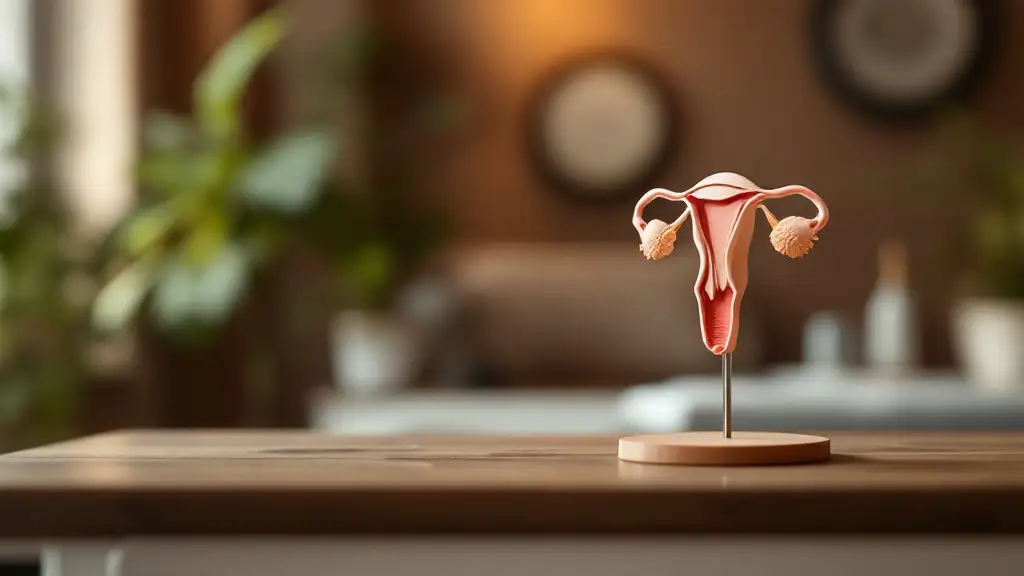What causes low ovarian reserve and how to respond
Understanding Diminished Ovarian Reserve: Causes, Impact, and Strategies

Exploring the Roots and Responses to Low Ovarian Reserve
Diminished ovarian reserve (DOR) is a key factor affecting fertility, characterized by a reduction in both the quantity and quality of a woman’s eggs. It often occurs with aging but can also be influenced by genetic, medical, and environmental factors. Understanding the causes, mechanisms, diagnosis, and potential responses is crucial for women concerned about their reproductive health and future family planning.
What Are the Causes of Low Ovarian Reserve?
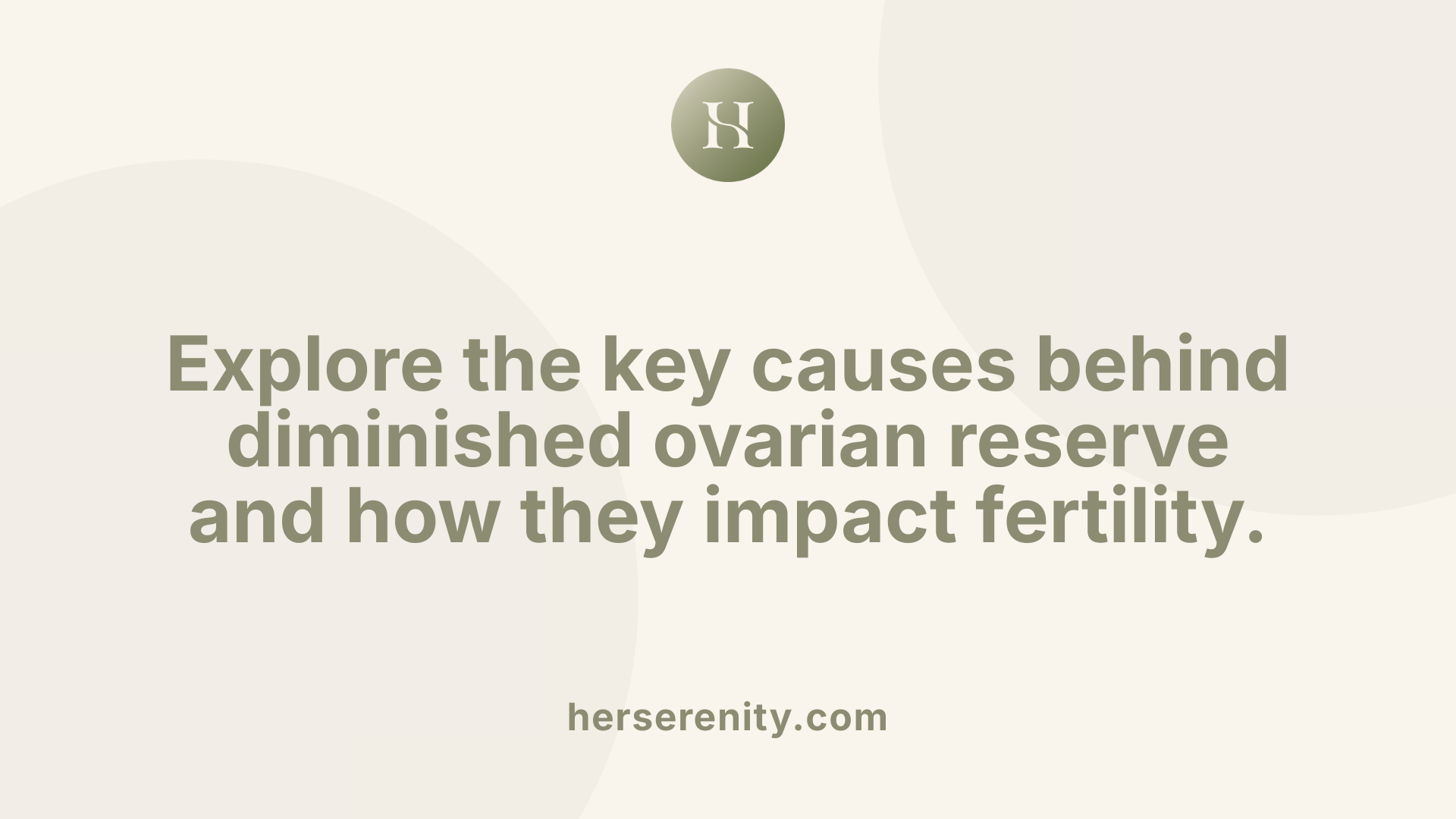
What are the causes of low ovarian reserve?
Low ovarian reserve, also known as diminished ovarian reserve (DOR), can develop due to a variety of factors. Understanding these causes helps women and healthcare providers in early detection and planning for fertility options.
The most significant and primary cause is aging. As women age, their ovarian reserve naturally declines, with a substantial decrease typically observed after age 35. Each woman is born with approximately 1 to 2 million eggs, which gradually diminish over time due to normal biological processes. By the time of menopause, fewer than 1,000 eggs remain. This decline accelerates after age 35 and results in reduced fertility.
Genetic factors also play a crucial role. Chromosomal abnormalities such as Fragile X syndrome and other X chromosome disorders are associated with decreased ovarian reserve. Women with these genetic issues often experience early menopause or diminished ovarian capacity. Genetic testing can sometimes identify these risks, especially in women with a family history of early menopause.
Medical treatments are another major cause of low ovarian reserve. Cancer therapies such as chemotherapy and radiation are highly gonadotoxic, meaning they can damage ovarian tissue and destroy eggs. Ovarian surgery—for conditions like endometriosis or ovarian cyst removal—may also impair ovarian function due to scarring or residual tissue damage. These medical interventions, while sometimes necessary, can result in a reduced number of remaining eggs.
Lifestyle factors, especially cigarette smoking, have been linked with a decrease in ovarian reserve. Tobacco exposure accelerates ovarian aging by damaging ovarian tissue and diminishing egg quality. Alcohol consumption and environmental pollutants may also contribute, although their impacts are less clearly defined.
Autoimmune conditions and infections can adversely affect ovarian health. Autoimmune responses may target ovarian tissue, leading to follicle destruction, while infections such as pelvic inflammatory disease can cause scarring and damage that compromise ovarian function.
Despite these known causes, there are cases where the exact reason for diminished ovarian reserve remains unknown, classified as idiopathic. These cases highlight the complex and multifaceted nature of ovarian aging.
| Cause Category | Specific Factors | Additional Information |
|---|---|---|
| Aging | Natural decline over time | Most significant factor, accelerates after 35 |
| Genetic Factors | Fragile X syndrome, X chromosome abnormalities | Early menopause, inherited risks |
| Medical Treatments | Chemotherapy, radiation, ovarian surgery | Damage to ovarian tissue, residual effects |
| Lifestyle Factors | Smoking, alcohol, environmental pollutants | Accelerates ovarian aging, reduces egg quality |
| Autoimmune & Infection | Autoimmune disorders, pelvic infections | Damage or destruction of ovarian tissue |
| Idiopathic Causes | Unknown reasons | Represents a significant percentage of cases |
In summary, low ovarian reserve results from a combination of biological aging, genetic predispositions, medical interventions, lifestyle choices, and sometimes unknown factors. Identifying these causes is essential for managing fertility health and determining appropriate treatment options.
Factors Contributing to Diminished Ovarian Reserve
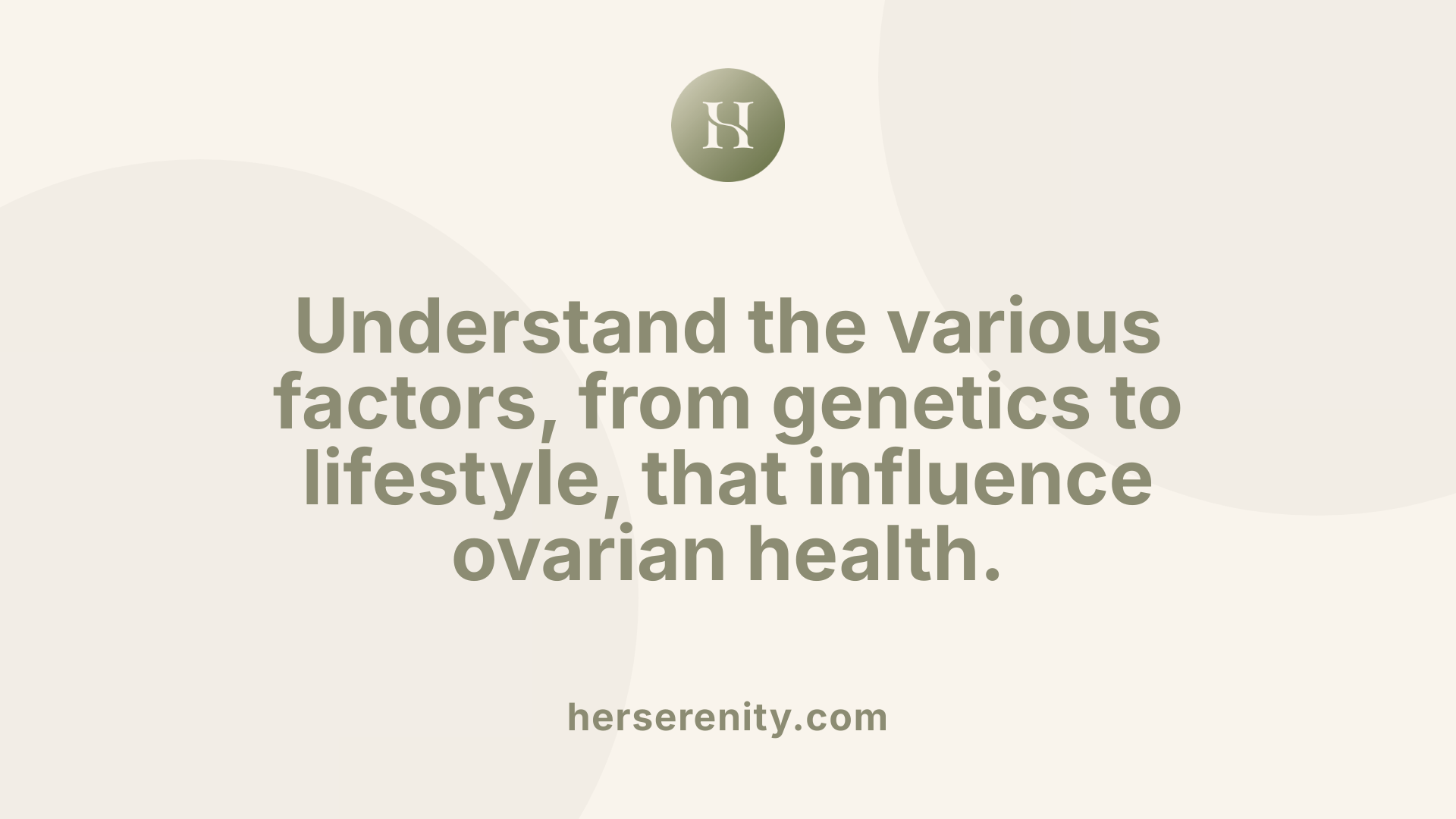
What factors contribute to diminished ovarian reserve?
Diminished ovarian reserve (DOR) is influenced by a variety of factors, many of which are related to aging and genetic predispositions. Natural aging is the primary driver, as women are born with a finite number of eggs that decline over time. This decline accelerates particularly after age 35, leading to fewer eggs and reduced fertility potential.
Genetic factors also play a significant role. Certain genetic abnormalities, including Fragile X syndrome and other chromosomal issues, can predispose women to early decline in ovarian reserve. Family history of early menopause further increases the risk.
Medical interventions can damage ovarian tissue and reduce egg count. Surgical procedures on the ovaries, such as for endometriosis or cyst removal, carry risks of scarring and residual damage. Treatments for cancer, especially radiation and chemotherapy, are highly toxic to ovarian cells and can result in premature ovarian failure.
Environmental exposures are another concern. Contact with pollutants like phthalates, PFASs, arsenic, and heat stress from high environmental temperatures can negatively affect follicle health. Such exposures may accelerate follicle atresia or impair ovarian function.
Lifestyle choices are critical as well. Smoking is one of the most well-documented harmful behaviors, as it lowers both the quantity and quality of eggs. Excessive alcohol use and exposure to environmental toxins also contribute to ovarian decline.
Hormonal imbalances, marked by altered levels of follicle-stimulating hormone (FSH), anti-Müllerian hormone (AMH), inhibin B, and gonadotropins, are reflective of decreased ovarian reserve. These hormonal changes can either result from or contribute to reduced follicular activity.
While stress is often linked to various health issues, it is not directly associated with diminished ovarian reserve. However, stress may influence hormonal regulation indirectly, potentially affecting overall ovarian health.
Understanding these factors helps in diagnosing and managing women at risk of or experiencing diminished ovarian reserve, paving the way for individualized fertility planning and treatment options.
Mechanisms Behind Reduced Ovarian Function

What are the mechanisms behind reduced ovarian function?
Reduced ovarian function is a complex process influenced by various cellular, genetic, and environmental factors. These mechanisms work together to diminish the quantity and quality of ovarian follicles, ultimately impacting fertility. Understanding these processes helps explain why ovarian reserve declines with age and in certain medical or genetic conditions.
One of the fundamental cellular changes involves telomere shortening and mitochondrial dysfunction. Telomeres are protective caps at the ends of chromosomes, and their shortening is associated with cellular aging. As ovarian cells age, especially oocytes, telomeres become less stable, leading to decreased cellular vitality and increased susceptibility to damage. Mitochondria, the energy-producing units within cells, also deteriorate over time. This decline results in reduced energy supply, impairing oocyte development, maturation, and overall health.
DNA integrity in oocytes is crucial for successful fertilization and embryo development. Over time, DNA damage accumulates due to oxidative stress and replication errors. These damages can lead to meiotic errors, such as improper chromosome segregation, which increases the risk of aneuploidy—an abnormal number of chromosomes in the embryo. This not only lowers fertility rates but also raises the risk of miscarriage.
Oxidative stress plays a significant role by generating reactive oxygen species (ROS) that harm ovarian cells. Elevated ROS levels can damage lipids, proteins, and DNA within oocytes and supporting cells in the ovaries. Environmental toxins, including pollution, pesticides, and cigarette smoke, exacerbate oxidative stress, further accelerating ovarian aging.
Disruptions in hormonal regulation are also pivotal. The hypothalamic–pituitary–ovarian axis orchestrates folliculogenesis through hormones like FSH, LH, estrogen, and inhibins. Alterations in these hormonal signals can impair follicle recruitment and growth, contributing to diminished reserve and responsiveness of the ovaries.
On a genetic level, mutations in specific genes, such as those involved in DNA repair or ovarian development, can predispose women to premature ovarian failure or early decline in ovarian function. Autoimmune responses, where the immune system mistakenly targets ovarian tissue, can also lead to follicular depletion.
Moreover, microRNA dysregulation—small non-coding RNA molecules that regulate gene expression—has been implicated in ovarian aging and dysfunction.
In sum, reduced ovarian function results from an intricate interplay of aging-related cellular processes, genetic predispositions, and environmental influences. These mechanisms not only explain the gradual decline in fertility with age but also highlight potential targets for future interventions aimed at preserving ovarian health.
Symptoms and Clinical Signs of Low Ovarian Reserve
 Most women with diminished ovarian reserve (DOR) do not experience noticeable symptoms in the early stages. Often, this condition is only identified through fertility testing when conception proves challenging. However, as the reserve declines further, some women may observe certain signs that reflect hormonal changes and aging.
Most women with diminished ovarian reserve (DOR) do not experience noticeable symptoms in the early stages. Often, this condition is only identified through fertility testing when conception proves challenging. However, as the reserve declines further, some women may observe certain signs that reflect hormonal changes and aging.
One of the potential early indicators is a change in menstrual cycle patterns. Women might notice their cycles becoming shorter or more irregular—for instance, moving from a typical 28 days to 24 days or less. This change, while common in perimenopause, is not universal and may not always signify decreased ovarian reserve.
As ovarian function diminishes, signs of estrogen deficiency become more apparent. These include hot flashes, which are sudden feelings of warmth often accompanied by sweating and flushing, vaginal dryness, and sleep disturbances like insomnia or night sweats. Such symptoms are more characteristic of approaching menopause or menopause itself but can also appear in women with primary ovarian insufficiency or severe DOR.
Increased miscarriage risk is another concern associated with poor egg quality, which often accompanies diminished ovarian reserve. When the egg supply diminishes or the remaining eggs are of compromised quality, the likelihood of pregnancy loss can rise.
Early or subtle signs could also include shorter menstrual cycles, which many women might overlook or dismiss as normal aging. More pronounced symptoms, such as hot flashes and vaginal dryness, typically emerge closer to menopause, signaling significant hormonal shifts.
It's important to note that many women with low ovarian reserve remain asymptomatic. Consequently, diagnosis often depends on hormonal assessments and imaging studies, such as blood tests measuring FSH, AMH, and estradiol, along with ultrasound evaluation of antral follicles.
Understanding these signs helps differentiate between normal aging changes and conditions requiring medical attention to optimize fertility management or address related health issues.
Diagnostic Methods for Assessing Ovarian Reserve
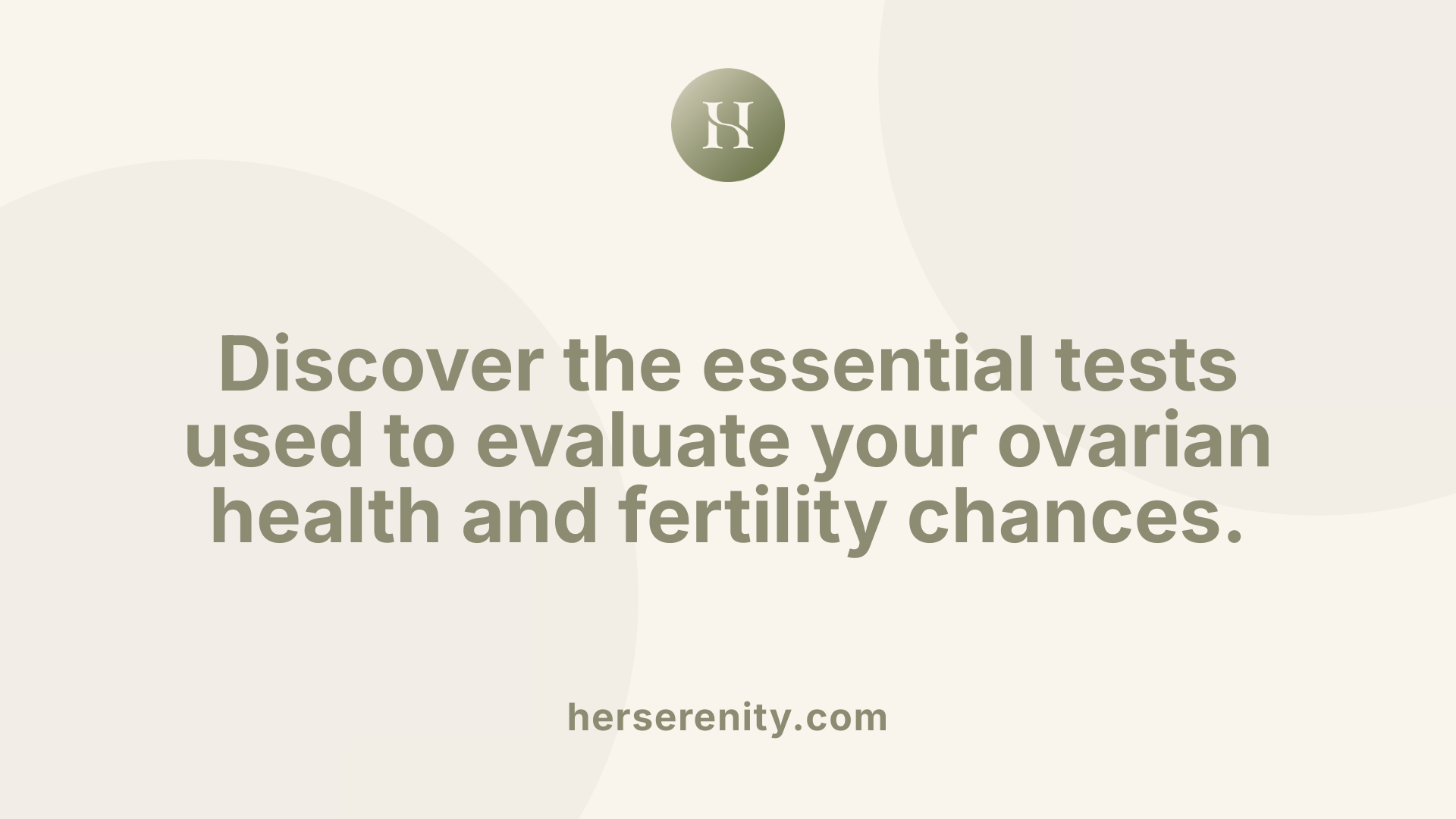
How is ovarian reserve assessed diagnostically?
Ovarian reserve is a crucial factor in understanding a woman’s fertility potential. To evaluate this, medical professionals rely on several diagnostic techniques that include blood tests and ultrasound imaging.
Blood tests are central to this assessment. They measure hormone levels such as follicle-stimulating hormone (FSH), anti-Müllerian hormone (AMH), estradiol, and inhibin B. AMH stands out as one of the most sensitive markers because it provides an estimate of the remaining egg supply regardless of the menstrual cycle day. It is usually measured at any point in the menstrual cycle. FSH, on the other hand, is typically tested on days 2 to 4 of the cycle, as its levels fluctuate during the cycle. Elevated FSH levels, especially above 10-15 mIU/mL, are often indicative of diminished ovarian reserve.
In addition to hormone levels, ultrasound imaging plays a vital role. Transvaginal ultrasound allows for the counting of antral follicles—small follicles visible during the early follicular phase, usually days 2 to 4 of the cycle. A low antral follicle count (AFC), generally less than 5-7 follicles, suggests a reduced egg reserve.
During ultrasound, ovarian volume is also measured. Smaller ovaries with fewer antral follicles reinforce the diagnosis of diminished ovarian reserve.
Combining hormonal data with ultrasound findings results in a more comprehensive assessment. This integrated approach improves the accuracy of predicting ovarian response in fertility treatments such as IVF.
However, it is important to recognize the limitations of these tests. While they provide valuable insights into the remaining egg supply, they do not directly predict the likelihood of natural conception or pregnancy success. Many women with decreased ovarian reserve can still conceive, and other factors like egg quality play a significant role.
Overall, thorough evaluation involves multiple tests performed during specific times in the menstrual cycle to ensure reliable results. This multi-modal assessment guides clinicians in planning effective fertility treatments and counseling women about their reproductive options.
Management and Treatment Strategies for Low Ovarian Reserve
What are the management and treatment options for low ovarian reserve?
Women diagnosed with diminished ovarian reserve (DOR) face unique challenges in achieving pregnancy, but several management strategies can optimize their chances. The primary approach involves assisted reproductive technologies.
Assisted reproduction: IVF with ovarian stimulation
In vitro fertilization (IVF) is often the most effective treatment for women with low ovarian reserve. Due to reduced egg quantity and potentially lower egg quality, high doses of follicle-stimulating hormone (FSH) are used during ovarian stimulation to maximize follicle recruitment. Despite intensive stimulation, responses can vary, and some women may require alternative options.
Use of donor eggs for better success rates
When ovarian response is extremely poor or eggs are of very low quality, using donor eggs becomes a viable option. Donor eggs offer higher success probabilities, especially for women over 37 or those with severe DOR, because they come from younger, healthy donors.
Egg and embryo preservation through freezing
Fertility preservation strategies are recommended before ovarian reserve declines further. Egg or embryo freezing allows women to store healthy gametes for future use. This approach is particularly relevant for younger women or those planning to undergo treatments like chemotherapy or surgery that might impair ovarian function.
Adjuvant therapies: DHEA, growth hormone, and androgens
Certain supplements and hormone therapies may provide modest benefits. DHEA supplementation has been shown to improve ovarian response in some women with DOR. Growth hormone and androgen treatments, like testosterone, are under investigation and may help improve egg quality and ovarian response. However, these therapies do not reverse DOR but can support the overall fertility treatment process.
Lifestyle modifications: healthy weight, avoiding smoking
Lifestyle factors also play a role in egg quality. Maintaining a healthy weight through balanced diet and regular exercise can support reproductive health. Avoiding smoking is crucial, as tobacco use accelerates ovarian aging and diminishes both egg quantity and quality.
Counseling on realistic expectations and success probabilities
Women with diminished ovarian reserve should receive thorough counseling. The prognosis varies based on age, severity of DOR, and other health factors. Clear communication about the likelihood of success, possible need for donor eggs, and alternative options helps set realistic expectations.
Early intervention and fertility preservation options
Early identification of diminished ovarian reserve enables timely intervention, potentially through egg freezing or other preservation methods. The sooner action is taken, the better the chances of success before further decline occurs.
Overall, it is essential to tailor treatment plans to the individual, considering age, ovarian response, and personal preferences, to optimize outcomes for women facing this challenging condition.
| Management Strategy | Description | Additional Notes |
|---|---|---|
| IVF with stimulation | Uses high doses of FSH to stimulate ovaries | Response varies; success depends on ovarian response |
| Donor eggs | Using eggs from a younger, healthy donor | Increased success rates in poor responders |
| Egg/embryo freezing | Preserving eggs or embryos for future use | Best done early to prevent further decline |
| DHEA, growth hormone, and androgens | Supportive therapies to improve response | Modest benefits; not cures |
| Lifestyle modifications | Healthy weight, no smoking | Can help maintain egg quality |
| Counseling | Set realistic expectations | Discuss success rates and options |
| Early intervention | Prioritize preservation and treatment | Critical for preserving fertility potential |
For comprehensive understanding and options available, women are encouraged to consult fertility specialists. Proper management can maximize chances of conception, even with diminished ovarian reserve.
Navigating Fertility Challenges in Diminished Ovarian Reserve
While diminished ovarian reserve poses significant reproductive challenges, understanding its causes, mechanisms, and diagnostic options empowers women to make informed decisions. Although current medical interventions cannot restore original egg quantity, fertility preservation techniques like egg freezing and assisted reproductive strategies such as IVF or using donor eggs offer pathways to parenthood. Maintaining a healthy lifestyle, avoiding environmental toxins, and early fertility assessments are key to optimizing reproductive outcomes. As research advances, targeted therapies and early detection remain crucial to helping women manage and respond effectively to diminished ovarian reserve.
References
- Diminished Ovarian Reserve: Causes, Symptoms & ...
- Diminished Ovarian Reserve (DOR): Diagnosis and ...
- Diminished Ovarian Reserve
- Potential factors result in diminished ovarian reserve
- Diminished Ovarian Reserve
- Diminished ovarian reserve and fertility
- Causes, Symptoms, and Treatment: Low Ovarian Reserve ...
- Diminished Ovarian Reserve

